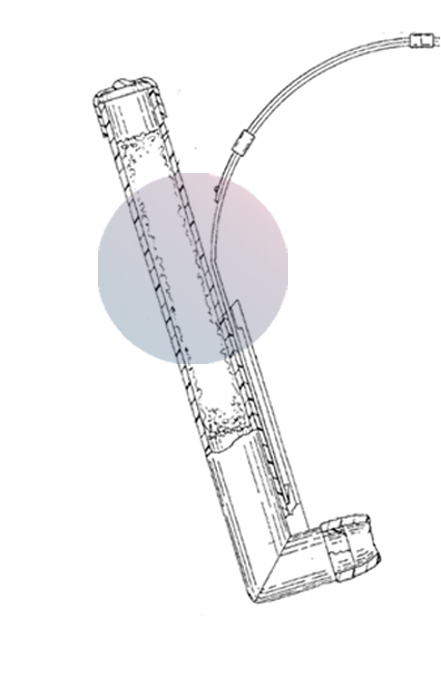Ear Protection Headset Redesign
Redesigning noise cancellation headsets with Human Factors principles
Human Factors | Product Design
Background
The headset and how it reduces sound
This project focused on the redesign of a noise cancellation headset so that the unique noise-blocking technology can be maintained, but comfort and usability aspects of it can be improved.
The headset was a passive noise cancellation device that used a patented sound reduction chamber to enhance low frequency attenuation. This product could be employed in both industrial and domestic environments.
It aimed to protect hearing up to 31dB while allowing speech sounds to be heard.
However, user evaluation tests of the current device found that while the product was effective for sound reduction, it was unacceptably uncomfortable when worn over a 12-hour work shift and difficult to put on and keep in place.
The Headset
The product muffler tube was it main source of sound attenuation using passive noise cancellation.
The product was meant to be worn over the head and rested on the concha of the ear effectively blocking outside noise.
To maintain the noise cancellation, it would be important to maintain the length and diameter of the muffler tube as any changes would affect the effective frequency of sound it was cancelling out.
How it works and how it is worn
Persona
We created a persona to better visualize how a typical user would use this device. It would be important to keep the user in mind when redesigning the product.
The prime demographic for the project was factory workers and users that would often use loud equipment.
Analysis of the headset
As a part of this project, existing data as well as expert reviews conducted using a Delphi-method analysis were compiled. Below are a list of the most important usability issues that were identified.
Connecter tube
The ear tip does not fit into the ear easily
Diameter of the ear tip is too large and thus hurts the concha
The headset stays on the head through clamping pressure. Over time, this hurts the cartilage in the ear
Ear Tip
Has a foam earbud that is meant to be replaceable
Foam does work in all weather conditions
Foam earbuds get dirty, absorb moisture and are not hygenic
Headband
Hair can get stuck in the headband
Cannot be worn with helmets or other gear
Strap is thin and not sturdy
Headband Connecter
Product is not strong & durable
Designed to fit most users but fails to do so
A mid-range product; does not gave a high-end feel
Design:Brainstorming and affinity diagramming session
This session used the data compiled from a review of the Delphi-method data, observational data, and the technological patents through which the headsets were designed,
Work activity affinity diagram (WAAD) of our brainstorming session (representation)
Prototyping
Rapid prototype methodologies such as clay modeling or 3D printing were used to test different configurations.
Each prototype was weighed against the overall system requirements and iterated upon.
Careful inspection of the patent of the muffler tube showed that the tube only required to have the same length and diameter, therefore, we could change its shape without compromising on noise reduction.
Prototype #1: U-Shaped muffler tube, inner-ear, made with modeling clay
Prototype #2: oval muffler tube, inner-ear, made with modeling clay
Prototype #3: 3D CAD rendering of coil shaped muffler tube
Prototype #3: 3D printed rapid prototype of CAD model
Final Design
Headband
The headband now went behind the head, rather than over the head as many factory workers required headgear.
Workers can rest the headset on their neck and shoulders during breaks.
This reduces hair contact with a headband.
Muffler tube
The muffler tube shape was changed to a coiling shape to make it easily fit into the muffler and improve durability.
This was possible since length and diameter stay the same maintaining the passive noise cancellation properties claimed by the original design.
Earpiece
Designed to encircle the ear, distributing the majority of band pressure to the head rather than ear cartilage
A ball and socket joint allows the modified connector tube to be inserted at any angle allowing for adjustment.
Ear tip
Used visco-elastic ear tips instead of existing ear tips.
These are biocompatible and take the shape of the concha over time.
Viscoelastic material act like liquids under slow gradual pressure increases and solids when pressure is suddenly applied.
Great for comfort and blocking sounds
Covering
The headband is also now covered with Goretex material which forms a layer over the headband.
This material provides all-weather protection.
A foam insert between the Goretex fabric helps cushion ear and reduce pressure on the concha.
Design Summary
Behind the head configuration
Flexible, thin and lightweight plastic band
Designed to encircle the ear
Coiled muffler tube to help improve durability, reduce bulkiness and improve aesthetics
Goretex fabric cover to allow use in multiple work environments and weather conditions.
Fabric improves aesthetic feel and durability.
Foam insert between Goretex and coiled tube to improve comfort
A viscoelastic ear insert improves comfort and improves the seal
Collaborators.
Amy Harvey
Harsh Sanghavi
Nayara Faria
Vaishakhi Suresh
Advisor.
Dr. John G. Casali
Year.
2018
Category.
Product Design
Human Factors Engineering

















